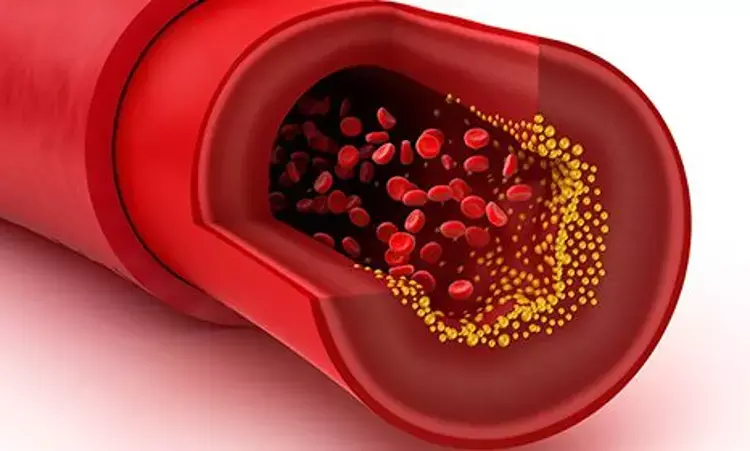- Home
- Medical news & Guidelines
- Anesthesiology
- Cardiology and CTVS
- Critical Care
- Dentistry
- Dermatology
- Diabetes and Endocrinology
- ENT
- Gastroenterology
- Medicine
- Nephrology
- Neurology
- Obstretics-Gynaecology
- Oncology
- Ophthalmology
- Orthopaedics
- Pediatrics-Neonatology
- Psychiatry
- Pulmonology
- Radiology
- Surgery
- Urology
- Laboratory Medicine
- Diet
- Nursing
- Paramedical
- Physiotherapy
- Health news
- Fact Check
- Bone Health Fact Check
- Brain Health Fact Check
- Cancer Related Fact Check
- Child Care Fact Check
- Dental and oral health fact check
- Diabetes and metabolic health fact check
- Diet and Nutrition Fact Check
- Eye and ENT Care Fact Check
- Fitness fact check
- Gut health fact check
- Heart health fact check
- Kidney health fact check
- Medical education fact check
- Men's health fact check
- Respiratory fact check
- Skin and hair care fact check
- Vaccine and Immunization fact check
- Women's health fact check
- AYUSH
- State News
- Andaman and Nicobar Islands
- Andhra Pradesh
- Arunachal Pradesh
- Assam
- Bihar
- Chandigarh
- Chattisgarh
- Dadra and Nagar Haveli
- Daman and Diu
- Delhi
- Goa
- Gujarat
- Haryana
- Himachal Pradesh
- Jammu & Kashmir
- Jharkhand
- Karnataka
- Kerala
- Ladakh
- Lakshadweep
- Madhya Pradesh
- Maharashtra
- Manipur
- Meghalaya
- Mizoram
- Nagaland
- Odisha
- Puducherry
- Punjab
- Rajasthan
- Sikkim
- Tamil Nadu
- Telangana
- Tripura
- Uttar Pradesh
- Uttrakhand
- West Bengal
- Medical Education
- Industry
Lipoprotein(a) induces rapid progression of atherosclerotic plaque in CAD patients: JACC

UK: According to a new study, lipoprotein(a) [Lp(a)] is related to the rapid development of coronary low-attenuation plaque in individuals with advanced stable coronary artery disease (necrotic core). This study was conducted by Yannick Kaiser and the team, the findings of whose work were published in the Journal of the American College of Cardiology.
Lp(a) is related to an elevated risk of myocardial infarction but the mechanism for this observation is not clear. Considering this, Dr. Kaiser and the team aimed to determine if Lp(a) is linked with unfavorable plaque progression.
For this study Lp(a) was assessed at baseline and 12 months in patients with advanced stable coronary artery disease who had coronary computed CT angiography to determine the progression of the total, calcific, non-calcific, and low-attenuation plaque (necrotic core) in particular. Lp(a) levels above 70 mg/dL were considered high. The association of Lp(a) with plaque progression was studied using linear regression analysis, which took into account body mass index, segment involvement score, and ASSIGN score (a Scottish cardiovascular risk score comprised of age, gender, diabetes, blood pressure, smoking, deprivation index, rheumatoid arthritis, and total and high-density lipoprotein [HDL]–cholesterol).
The key findings of this work were as follow:
1. A total of 191 patients (65.9 8.3 years old; 152 [80%] male) were enrolled in the study, with median Lp(a) values of 100 mg/dL in the high Lp(a) group and 10 mg/dL in the low Lp(a) group.
2. There was no change in the degree of coronary artery disease or plaque load at the start.
3. Those with high Lp(a) had a faster development of low-attenuation plaque than patients with low Lp(a) (26.2 88.4 mm3 vs 0.7 50.1 mm3).
4. The relationship between Lp(a) and low-attenuation plaque volume development was verified by multivariable linear regression analysis (β= 10.5% increase for each 50 mg/dL Lp(a)).
5. There was no difference in the advancement of total, calcific, and noncalcified plaque volume.
In conclusion, despite undergoing guideline-based preventive treatments, high blood Lp(a) concentrations are related to the rapid development of low-attenuation plaque (necrotic core) in individuals with advanced multi-vessel coronary artery disease. This gives a plausible molecular explanation for the link between Lp(a) and the risk of recurrent myocardial infarction, and it supports Lp(a) as a novel therapy target in atherosclerosis. Randomized controlled studies of Lp(a) reduction are now necessary to determine if it lowers low-attenuation plaque progression as well as cardiovascular events.
Reference:
Yannick Kaiser, Marwa Daghem, Evangelos Tzolos, Mohammed N. Meah, Mhairi K. Doris, Alistair J. Moss, Jacek Kwiecinski, Jeffrey Kroon, Nick S. Nurmohamed, Pim van der Harst, Philip D. Adamson, Michelle C. Williams, Damini Dey, David E. Newby, Erik S.G. Stroes, Kang H. Zheng, Marc R. Dweck, Association of Lipoprotein(a) With Atherosclerotic Plaque Progression, Journal of the American College of Cardiology, https://doi.org/10.1016/j.jacc.2021.10.044
Medical Dialogues consists of a team of passionate medical/scientific writers, led by doctors and healthcare researchers. Our team efforts to bring you updated and timely news about the important happenings of the medical and healthcare sector. Our editorial team can be reached at editorial@medicaldialogues.in.
Dr Kamal Kant Kohli-MBBS, DTCD- a chest specialist with more than 30 years of practice and a flair for writing clinical articles, Dr Kamal Kant Kohli joined Medical Dialogues as a Chief Editor of Medical News. Besides writing articles, as an editor, he proofreads and verifies all the medical content published on Medical Dialogues including those coming from journals, studies,medical conferences,guidelines etc. Email: drkohli@medicaldialogues.in. Contact no. 011-43720751


